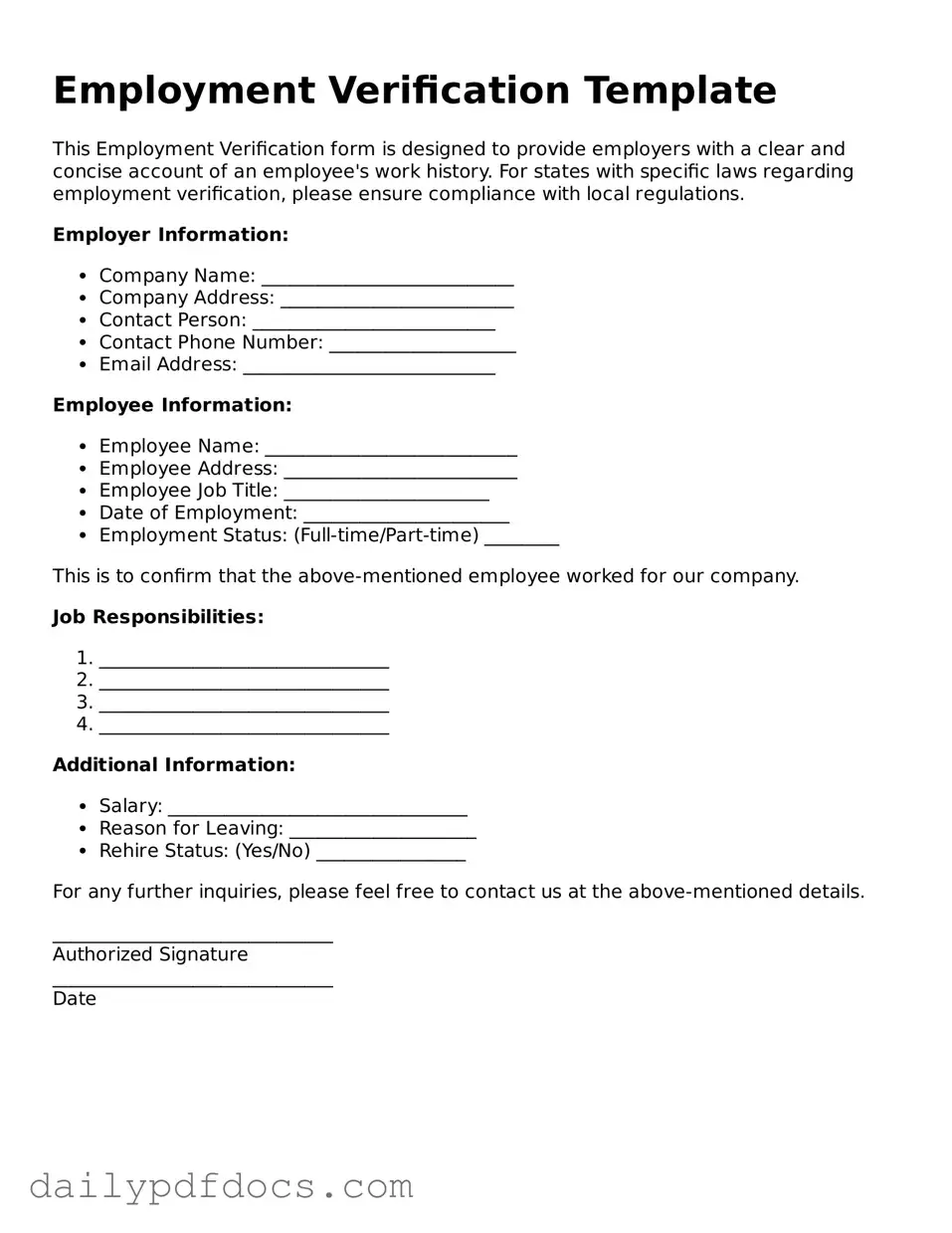Employment Verification Template
This Employment Verification form is designed to provide employers with a clear and concise account of an employee's work history. For states with specific laws regarding employment verification, please ensure compliance with local regulations.
Employer Information:
- Company Name: ___________________________
- Company Address: _________________________
- Contact Person: __________________________
- Contact Phone Number: ____________________
- Email Address: ___________________________
Employee Information:
- Employee Name: ___________________________
- Employee Address: _________________________
- Employee Job Title: ______________________
- Date of Employment: ______________________
- Employment Status: (Full-time/Part-time) ________
This is to confirm that the above-mentioned employee worked for our company.
Job Responsibilities:
- _______________________________
- _______________________________
- _______________________________
- _______________________________
Additional Information:
- Salary: ________________________________
- Reason for Leaving: ____________________
- Rehire Status: (Yes/No) ________________
For any further inquiries, please feel free to contact us at the above-mentioned details.
______________________________
Authorized Signature
______________________________
Date
